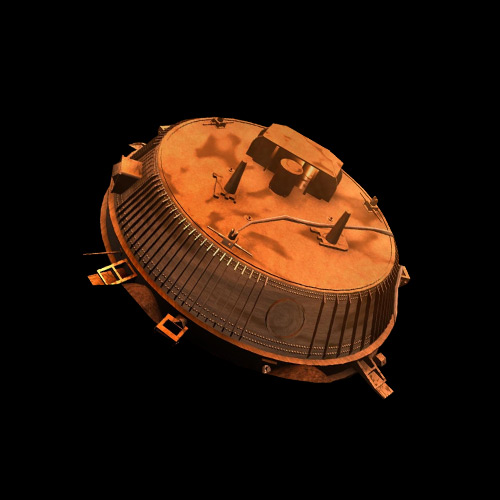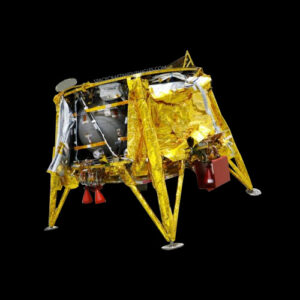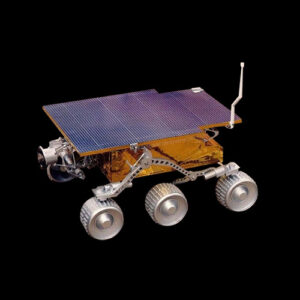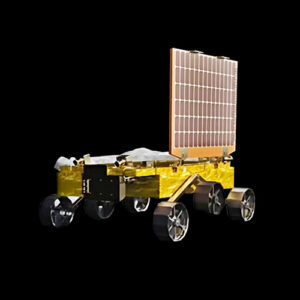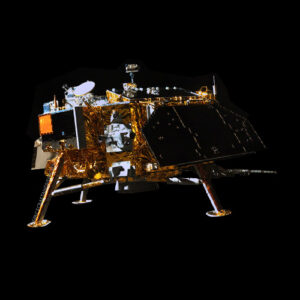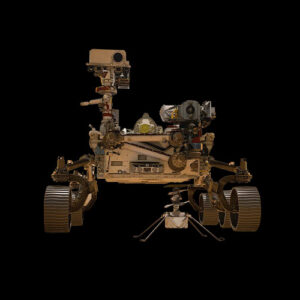The Huygens Probe, a landmark mission of the European Space Agency (ESA), was designed to explore Titan, Saturn‘s largest moon. Launched as part of the Cassini-Huygens mission, Huygens was the first spacecraft to land on a body in the outer solar system. Its purpose was to study Titan’s atmosphere and surface, providing unprecedented insights into this enigmatic moon.
Notable achievements of the Huygens mission include the first direct measurements of Titan’s atmospheric composition and the first images of its surface, revealing a landscape shaped by liquids and complex organic chemistry. These findings have significantly advanced our understanding of Titan and the conditions that may support life.
Design and Construction
The Huygens Probe was designed to endure the harsh conditions of space and Titan’s dense atmosphere. It featured a robust, aerodynamic design to withstand high-speed entry and a suite of scientific instruments protected by a heat shield. The spacecraft was constructed using lightweight but durable materials, such as aluminum and titanium, to ensure both strength and efficiency. Unique engineering challenges included developing a heat shield capable of withstanding the intense heat generated during atmospheric entry and designing a parachute system to slow the probe’s descent through Titan’s thick atmosphere. Additionally, the probe’s instruments had to be protected from the extreme cold and pressure encountered on Titan’s surface. Engineers overcame these challenges by employing advanced materials and innovative thermal protection systems, ensuring that the Huygens Probe could successfully complete its mission.
Mission Objectives
The primary mission objectives of the Huygens Probe were to study Titan’s atmospheric structure and composition, to understand its meteorology and dynamics, and to analyze the moon’s surface properties and composition. Key goals included measuring the atmospheric pressure and temperature, determining the chemical makeup of the atmosphere, and capturing images of Titan’s surface. Secondary objectives included studying the interaction between Titan’s atmosphere and its surface, detecting possible surface liquids or ices, and analyzing the isotopic ratios of various elements to gain insights into the moon’s geological history. These objectives aimed to provide a comprehensive understanding of Titan’s environment and its potential for supporting life.
Launch and Deployment
The Huygens Probe was launched aboard a Titan IVB/Centaur rocket on October 15, 1997, from Cape Canaveral Air Force Station, Florida, as part of the Cassini-Huygens mission. The probe remained attached to the Cassini spacecraft during its seven-year journey to Saturn, finally separating on December 25, 2004.
After separation, Huygens began its descent towards Titan, entering the moon’s atmosphere on January 14, 2005. Despite minor communication issues during descent, Huygens successfully transmitted data back to Earth for about 90 minutes. Key discoveries included the detection of methane in the atmosphere, evidence of liquid methane or ethane on the surface, and images showing a landscape with river channels, dry lake beds, and possible cryovolcanoes. These findings provided valuable insights into Titan’s meteorology, surface processes, and potential habitability.
Technical Specifications
- Dimensions: Diameter: 2.7 meters (8.9 feet).
- Weight: Approximately 318 kilograms (701 pounds).
- Payload Capacity: Scientific instruments totaling about 49 kilograms (108 pounds).
- Propulsion: None (descent controlled by a parachute system).
- Power Source: Batteries (designed to last for the duration of the descent and surface mission).
- Instruments and Equipment:
- Descent Imager/Spectral Radiometer (DISR): Captured images and spectral data.
- Gas Chromatograph Mass Spectrometer (GCMS): Analyzed atmospheric composition.
- Aerosol Collector and Pyrolyser (ACP): Collected and analyzed aerosol particles.
- Surface Science Package (SSP): Measured physical properties of Titan’s surface.
- Doppler Wind Experiment (DWE): Measured wind speeds and directions during descent.
Current Status
As of 2024, the Huygens Probe remains on Titan’s surface, having completed its mission in 2005. The data it transmitted during its descent and on the surface of Titan have been thoroughly analyzed, providing significant insights into Titan’s atmosphere and geology. The mission is considered complete, with no ongoing operations involving Huygens. However, the wealth of data collected continues to be a valuable resource for scientists studying Titan and planetary atmospheres in general. Future missions to Titan, such as NASA’s Dragonfly rotorcraft, are being planned to build on the foundation laid by Huygens, further exploring the moon’s potential for life and its complex chemical environment.
